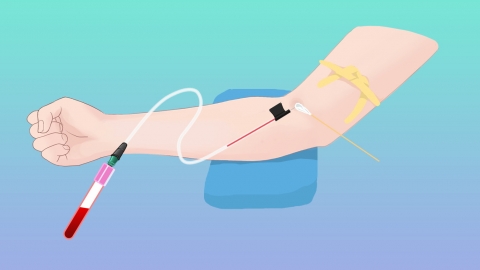What are the precautions for blood specimen collection?
Under normal circumstances, precautions for blood specimen collection mainly include dietary preparation before collection, control of rest and physical activity, disclosure of medication use, proper positioning during the procedure, and post-collection pressure care. These measures help ensure specimen quality and safety during the collection process. A detailed analysis is as follows:

1. Dietary preparation before collection: Patients should remain fasting for 8–12 hours prior to blood collection, avoiding food and drink (especially high-sugar, high-fat, and high-protein foods), as well as alcohol, coffee, and strong tea. These substances may interfere with the accuracy of test results.
2. Rest and physical activity control: Ensure adequate sleep the day before collection and avoid staying up late. On the day of collection, refrain from strenuous exercise such as running or jumping rope. Sleep deprivation and intense physical activity may elevate levels of white blood cells, creatine kinase, and other markers in the blood, potentially placing the body in a stress state that affects the authenticity of test results.
3. Medication disclosure: If you are taking long-term medications—such as anticoagulants, antihypertensives, or hypoglycemic agents—or have recently taken antibiotics or vitamin supplements, inform healthcare personnel in advance. Some medications can directly affect blood test results; for example, anticoagulants may prolong clotting time.
4. Proper positioning: Maintain the correct body position during collection, typically sitting or lying down, with the arm extended naturally and relaxed. Avoid excessive bending or tensing of the arm. Incorrect positioning may compress blood vessels, impair blood flow, increase the difficulty of blood collection, or trigger vasospasm due to muscle tension, thereby prolonging the procedure.
5. Post-collection pressure care: After blood collection, apply firm but gentle pressure to the puncture site using a sterile cotton swab or cotton ball for 5–10 minutes. Avoid rubbing the area, as this may cause local vessel rupture, leading to subcutaneous bleeding, bruising, or hematoma.
It is recommended to monitor the puncture site for any abnormalities such as persistent bleeding or swelling, and promptly communicate with healthcare providers if issues arise. Additionally, after collection, individuals may moderately replenish fluids and consume easily digestible food to aid recovery, while avoiding heavy physical labor or vigorous exercise immediately afterward.




